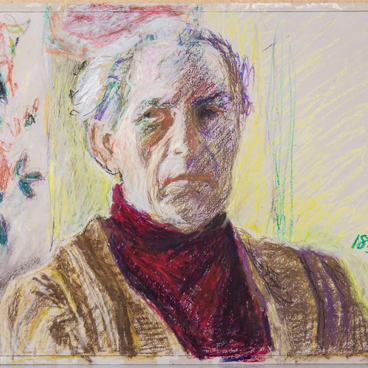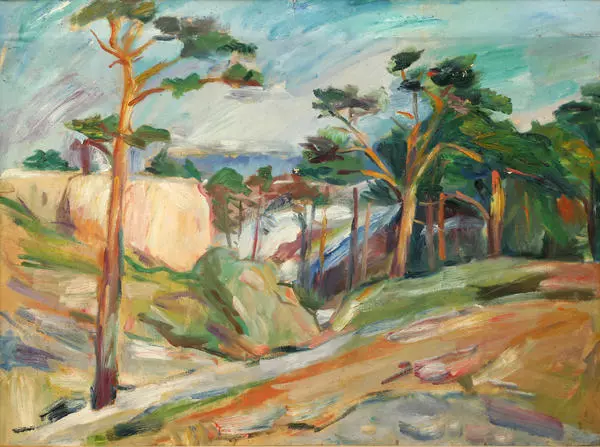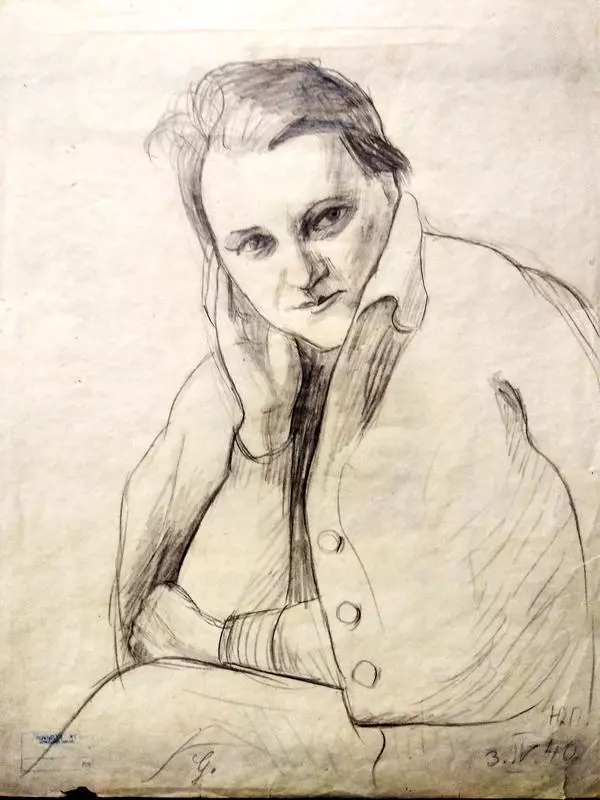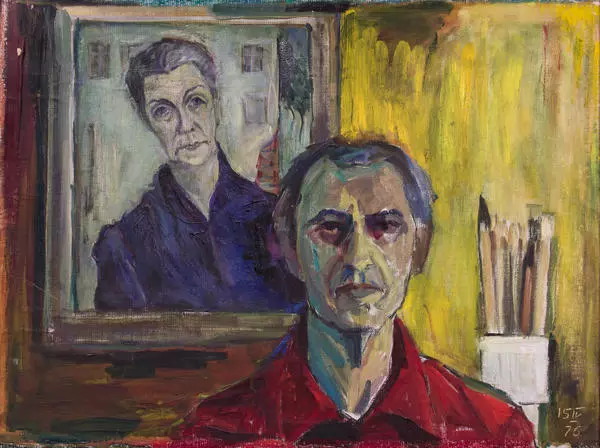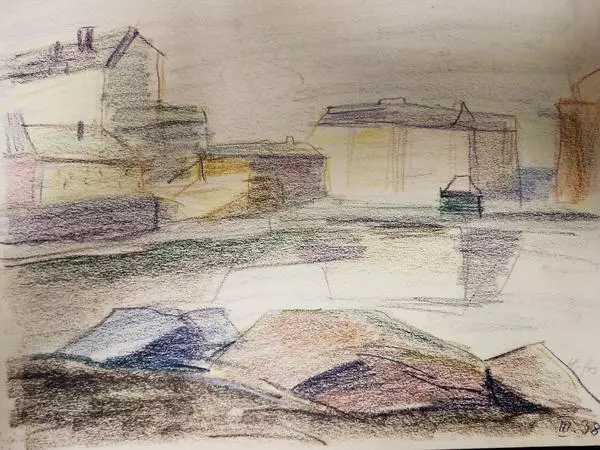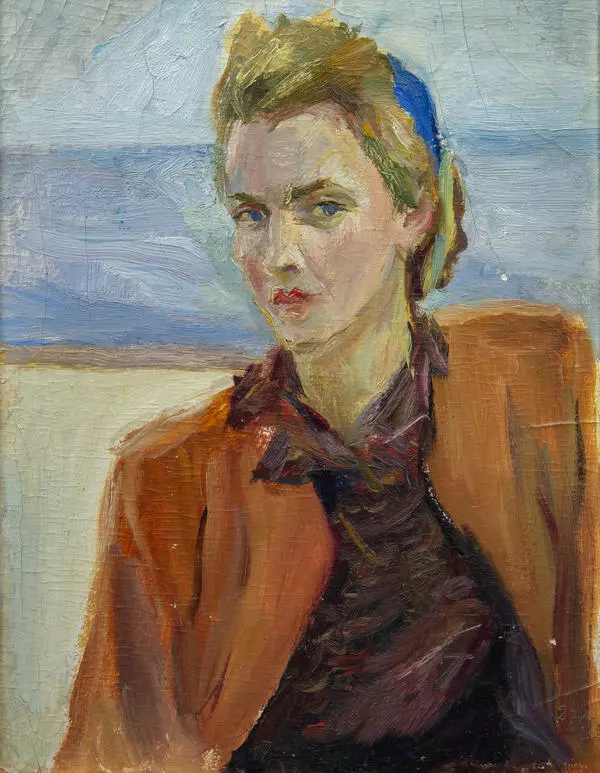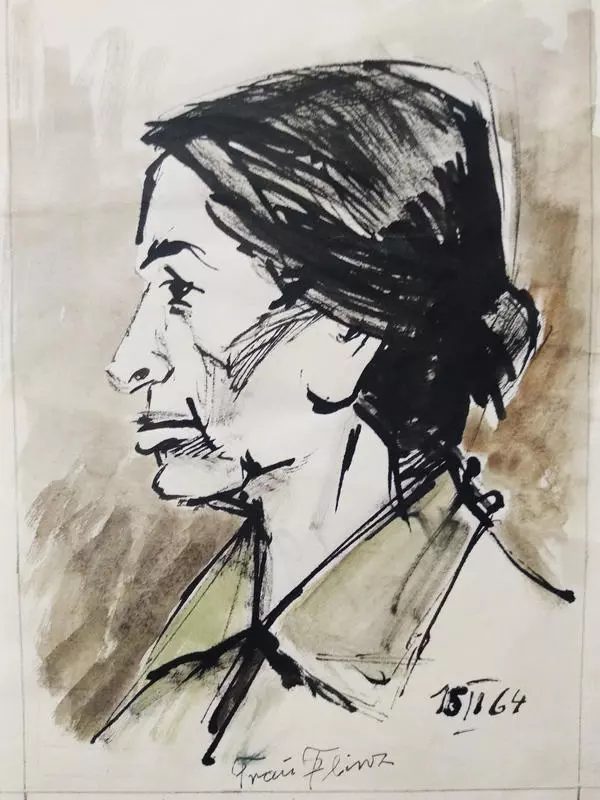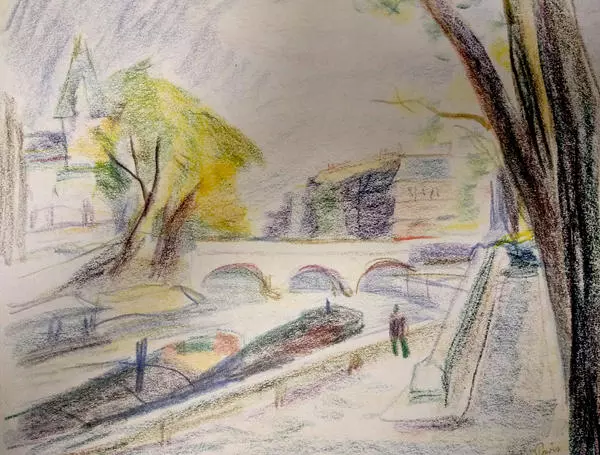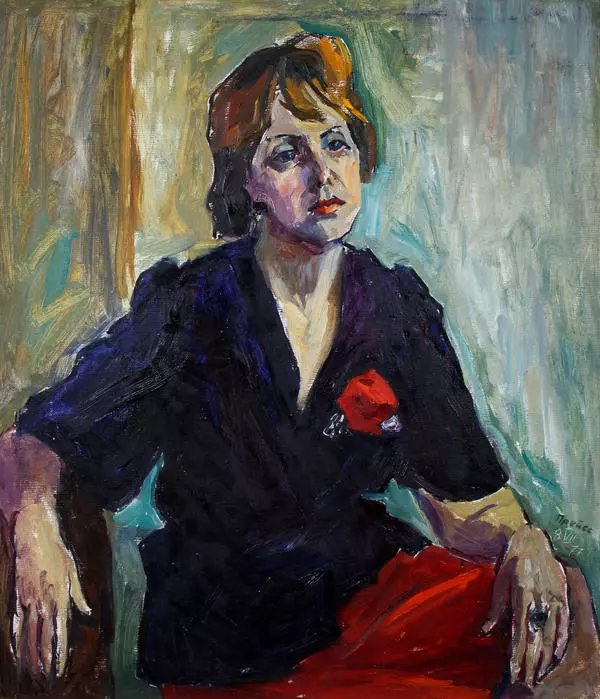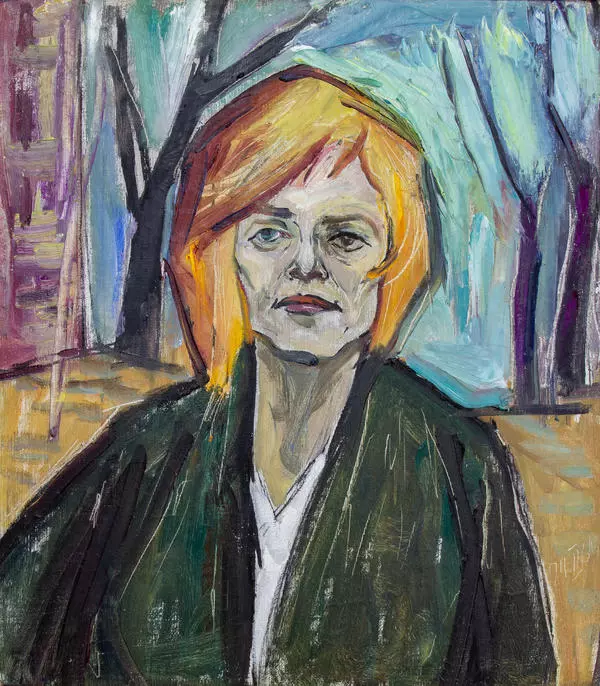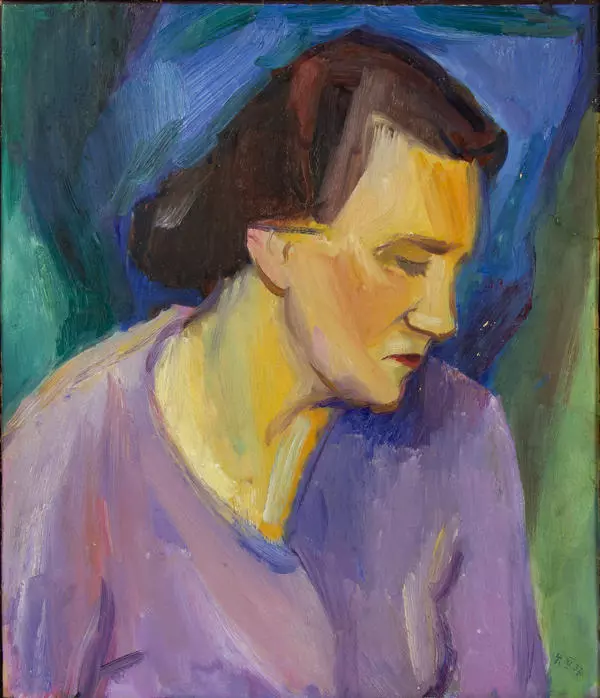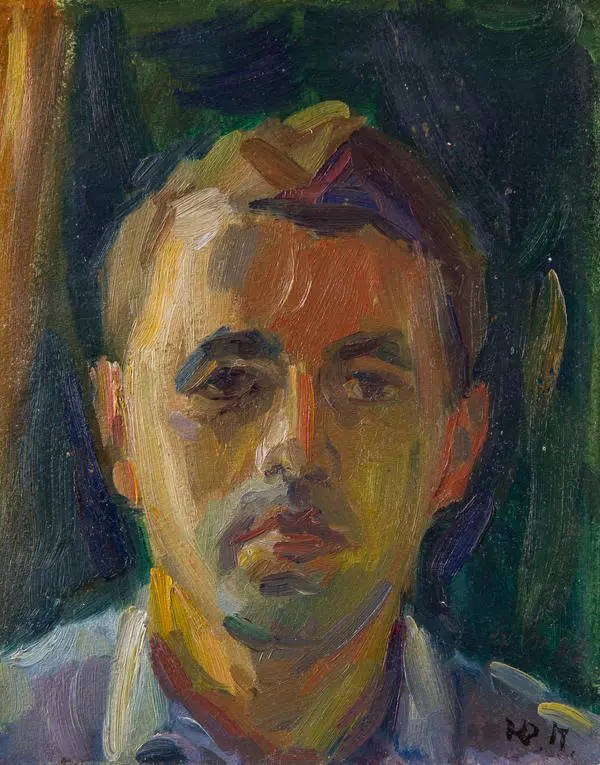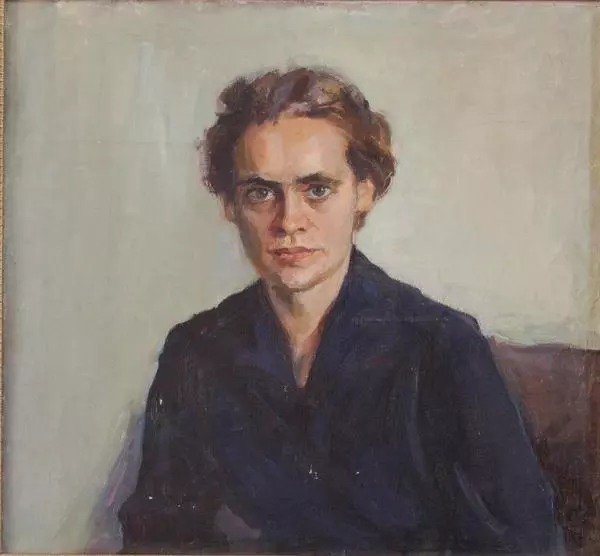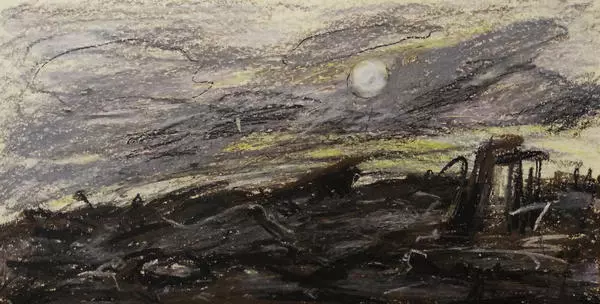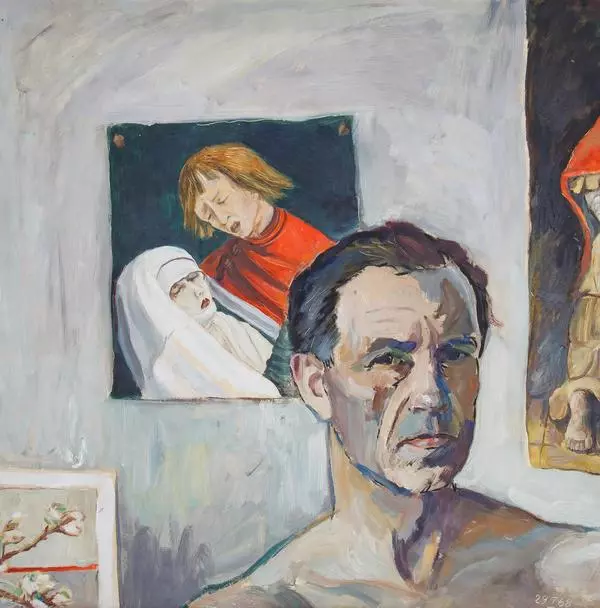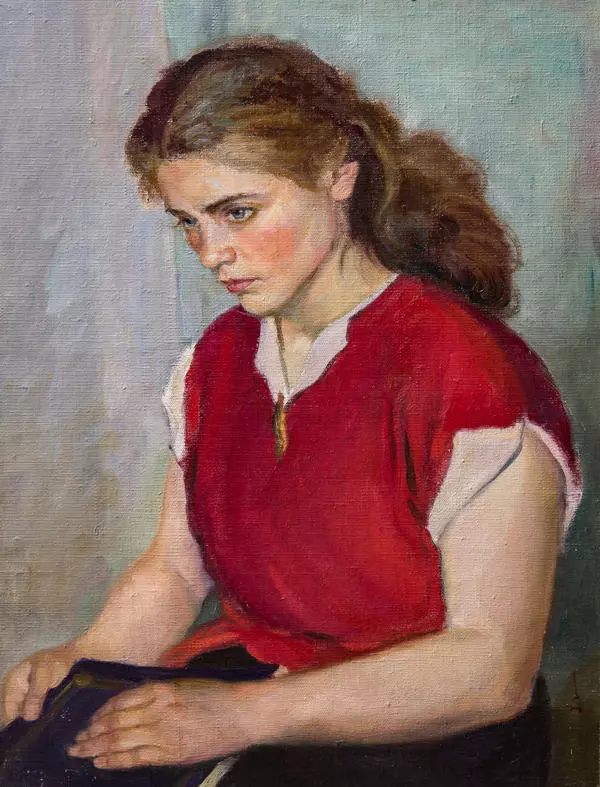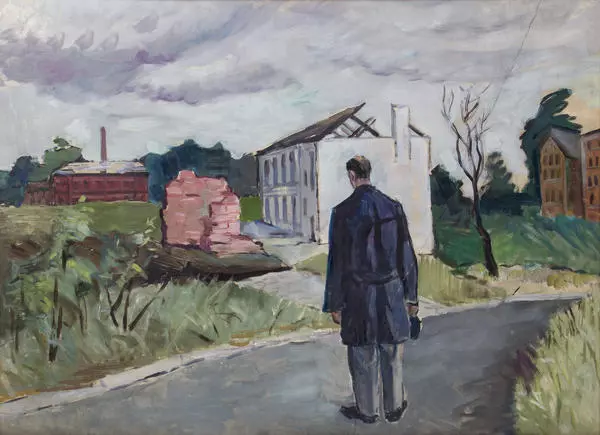Jurgis Preiss painted Moscow Still Life on January 5, 1962, with oil paint on a piece of cardboard. The artist depicted a bottle of wine and a pineapple on a table. He brought these delicacies from Moscow for the New Year holiday dinner. This is why this still-life piece has the word Moscow in the title, even though the artist created it in Kemerovo.
Moscow Still Life
Время создания
1962
Размер
34x49 cm
34×49 cm
34×49 cm
Техника
Cardboard, oil painting
13
Открыть в приложении#1
Jurgis Preiss
Moscow Still Life
#2
#3
The researches call this piece one of the most cheerful still-life pieces of the master. Preiss used big saturated color strokes, open bright colors and strong contrasts. Juice colors helped him to express his ravishment from life of that period.
In 1962, Jurgis Preiss was living and working in Kemerovo. According to the researchers, Kemerovo period lasted from 1956 until 1984. In those years, the artist got married again – he married Lubov Biryukova, who was his great love. His work benefited from that. Those were the years of Thaw in the USSR, when the censorship got significantly weaker. After the death of Josef Stalin, the artists acquired more freedom, and Jurgis Preiss resumed working in the style he developed back in the1930-s, during his travelling in Europe.
The researchers attribute the European period of Preiss’ work to the new traditionalism. This artistic style comprised two main elements. One of them was close attention to the reality. The artists based their work on what they effectively saw with their own eyes: interior designs, still life, landscapes, sketches from life, academy figures. The second element of this style was using the developments of the entire European art of that period. New traditionalists structured their space without using the single point perspective, but within a homogenous colorful mass.
In 1962, Jurgis Preiss was living and working in Kemerovo. According to the researchers, Kemerovo period lasted from 1956 until 1984. In those years, the artist got married again – he married Lubov Biryukova, who was his great love. His work benefited from that. Those were the years of Thaw in the USSR, when the censorship got significantly weaker. After the death of Josef Stalin, the artists acquired more freedom, and Jurgis Preiss resumed working in the style he developed back in the1930-s, during his travelling in Europe.
The researchers attribute the European period of Preiss’ work to the new traditionalism. This artistic style comprised two main elements. One of them was close attention to the reality. The artists based their work on what they effectively saw with their own eyes: interior designs, still life, landscapes, sketches from life, academy figures. The second element of this style was using the developments of the entire European art of that period. New traditionalists structured their space without using the single point perspective, but within a homogenous colorful mass.
#4
The artists identified the forms by contours, broke the configuration of things, painted with relief strokes, lines and splashes of bright paint. None of these techniques was mandatory — every artist used only the methods he/she wanted to create the required effect.
#5
In Kemerovo, Jurgis Preiss returned to the manner of the new traditionalists. He preferred light colors and easy manner of painting, created still life pieces and female portraits. The researchers emphasized, that Preiss did not repeat his own work in Europe. His style generally changed during the period he lived in the USSR. After easement of censorship, his work became exuberant, sharp, and high-sounding.
Kemerovo Regional Museum of Fine Arts received the painting in 1969. Jurgis Preiss himself presented Moscow Still Life, and it became the first piece by Preiss in the Museum’s collection.
Kemerovo Regional Museum of Fine Arts received the painting in 1969. Jurgis Preiss himself presented Moscow Still Life, and it became the first piece by Preiss in the Museum’s collection.
#6
Kemerovo Regional Museum of Fine Arts
читать дальшескрыть
00:00
00:00
1x
Moscow Still Life
Время создания
1962
Размер
34x49 cm
34×49 cm
34×49 cm
Техника
Cardboard, oil painting
13
Открыть в приложении
Поделиться

